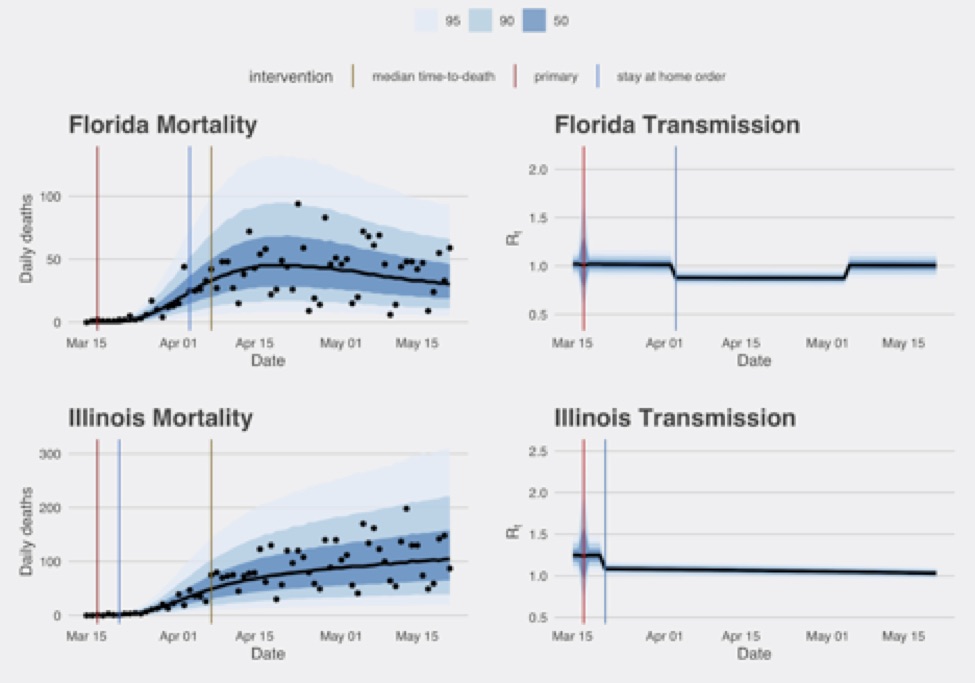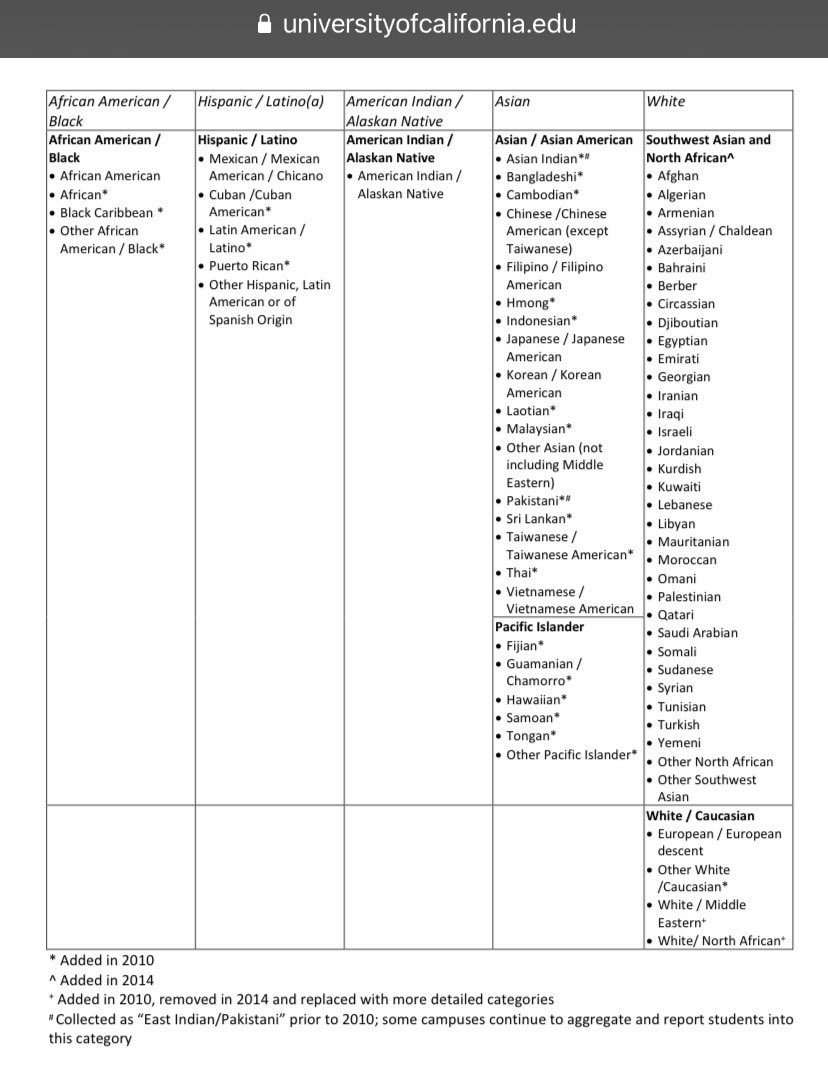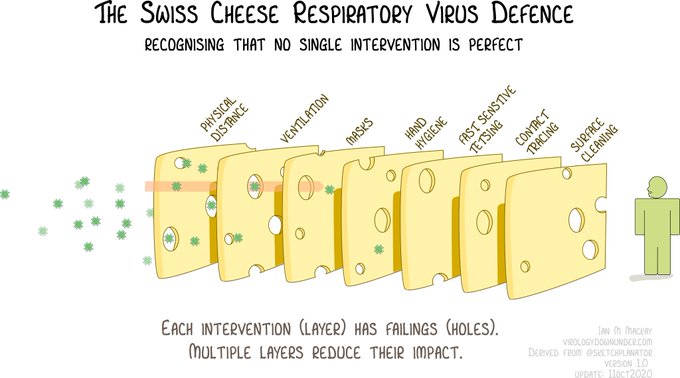
A key to controlling the spread of SARS-CoV-2 is decreasing social mixing, eg, by bans on gatherings. But what about elections? Let’s talk about whether the 2020 primaries changed the course of the COVID19 pandemic and what this might mean for general election on November 3. 1/ 

Many people are asking if in-person voting is sensible in the middle of a pandemic. COVID19, like any serious outbreak of a contagious disease, can place the virtues of public health and civic engagement into direct conflict. 2/
But we find that the voting that took place in the primaries in the Spring of 2020 had no discernible impact on the course of the COVID19 epidemic in the USA, *at the county level*, as we describe in this essay at @fivethirtyeight: fivethirtyeight.com/features/votin… 3/
Our @yale team included @EricFeltham, @mqdicer, and Laura Forastiere. We are grateful for support from @RWJF. Our pre-print is here: arxiv.org/abs/2010.02896 Our data and code are here: github.com/human-nature-l… 4/
Alas, election procedures during COVID19 have become a partisan issue. cnn.com/2020/07/27/pol… Some Democrats recommend voting by mail and some Republicans say its fine to show up in person. 5/
Discussion so far has occurred in absence of a comprehensive assessment of actual risk of voting. Two prior studies of Wisconsin reached conflicting conclusions re impact of in-person voting on later course of COVID19 epidemic: nber.org/papers/w27187 & medrxiv.org/content/10.110… 6/
We assembled data on the timing of the primaries in 34 states last spring and also the tempo of the COVID19 epidemic as ascertained using *mortality* data in order to explore whether voting seemed to modify the course of the epidemic at the county level (in 1,574 counties). 7/
We used two different analytic approaches, one econometric and one epidemiological. 8/
Our first approach relies on a technique called “matching.” In an ideal world, we would be able to directly examine the counterfactual consideration of “What if this state had not held its primary?” and compare the COVID19 death rates under those two scenarios. 9/
We approximate this alternate world by using “matches”: counties with similar demographic characteristics relevant to spread of COVID19 (eg, population density, percentage >65 years of age) and also a similar cumulative death rate in the period leading up to the primary date. 10/
For 36 days after the primary, as shown in the figure, we find no increase in mortality in counties that held primaries in the Spring of 2020 compared to otherwise similar counties that did not. 11/ 

Our second approach modeled changes in the “reproduction number” (transmission) of COVID19 over time, using an epidemiological model of disease transmission (we used the method employed by Flaxman et al in @nature nature.com/articles/s4158…). 12/
The reproduction number, R, is a measure of a virus’ transmissibility, and tells us how many people become infected for each already-infected person. Using death from COVID19 as an indicator, did the primaries accelerate contagion or not? 13/
No, the primaries in 2020 did not affect the spread of SARS-CoV-2. It is clear that the lockdowns in each state reduced transmission, but equally clear, using the same data and method, that the primary elections did *not* affect COVID19 transmission. 14/ 

We need to interpret these findings with substantial caution. 15/
Our analysis is *ecological*, in the sense that we examine whether primary elections affected the course of the pandemic in a county, not whether – at the *individual* level – going to the polls affects an individual’s risk of contracting the infection. 16/
Also, most primaries were held in fair weather, enabling individuals to wait in long lines outside, at lower risk. We believe that risk will be higher if voters are cramped indoors to avoid cold weather. And turn-out, and hence crowding, might be different too. 17/
But voting itself is not intimate. People stay apart, and are often in relatively large and well ventilated spaces such as school gyms. People tend to be quiet, or even silent, while voting (loud talking and singing have been associated with viral transmission and outbreaks). 18/
Hence we concur with the estimation that voting exhibits a similar level of risk to shopping at the grocery store. theatlantic.com/politics/archi… via @TheAtlantic /19
In short, people who do not fall into high-risk groups for COVID19 may wish to consider voting in person in what appears to be one of the most important elections in a generation. 20/
Our lab #HNL humannaturelab.net has been active in studying the impact of COVID19 on our society. In addition to the above effort assessing the impact of the primary elections on the epidemic in the USA, we have completed a number of other projects… 21/
We released an app @HunalaApp (hunala.yale.edu). It allows you to forecast risk of exposure to SARS-CoV-2 based on where you live and who you know. Thousands use it. It’s like WAZE for coronavirus. It respects your privacy. Here’s a thread:
https://twitter.com/NAChristakis/status/1267419153822109696?s=2022/
This early paper in @nature tracked the spread of the SARS-CoV-2 virus in China through early February: nature.com/articles/s4158… (Here is a thread describing the findings:
https://twitter.com/NAChristakis/status/1255465996128849920?s=20.) 23/
And this book, APOLLO’S ARROW: THE PROFOUND AND ENDURING IMPACT OF CORONAVIRUS ON THE WAY WE LIVE, out October 27 via @littlebrown @lbsparkbooks explains how, while plagues have always afflicted our species, the experience is new to *us.* amazon.com/Apollos-Arrow-… 24/
More #HNL efforts to help understand and cope with the pandemic will be appearing soon. 25/
• • •
Missing some Tweet in this thread? You can try to
force a refresh




